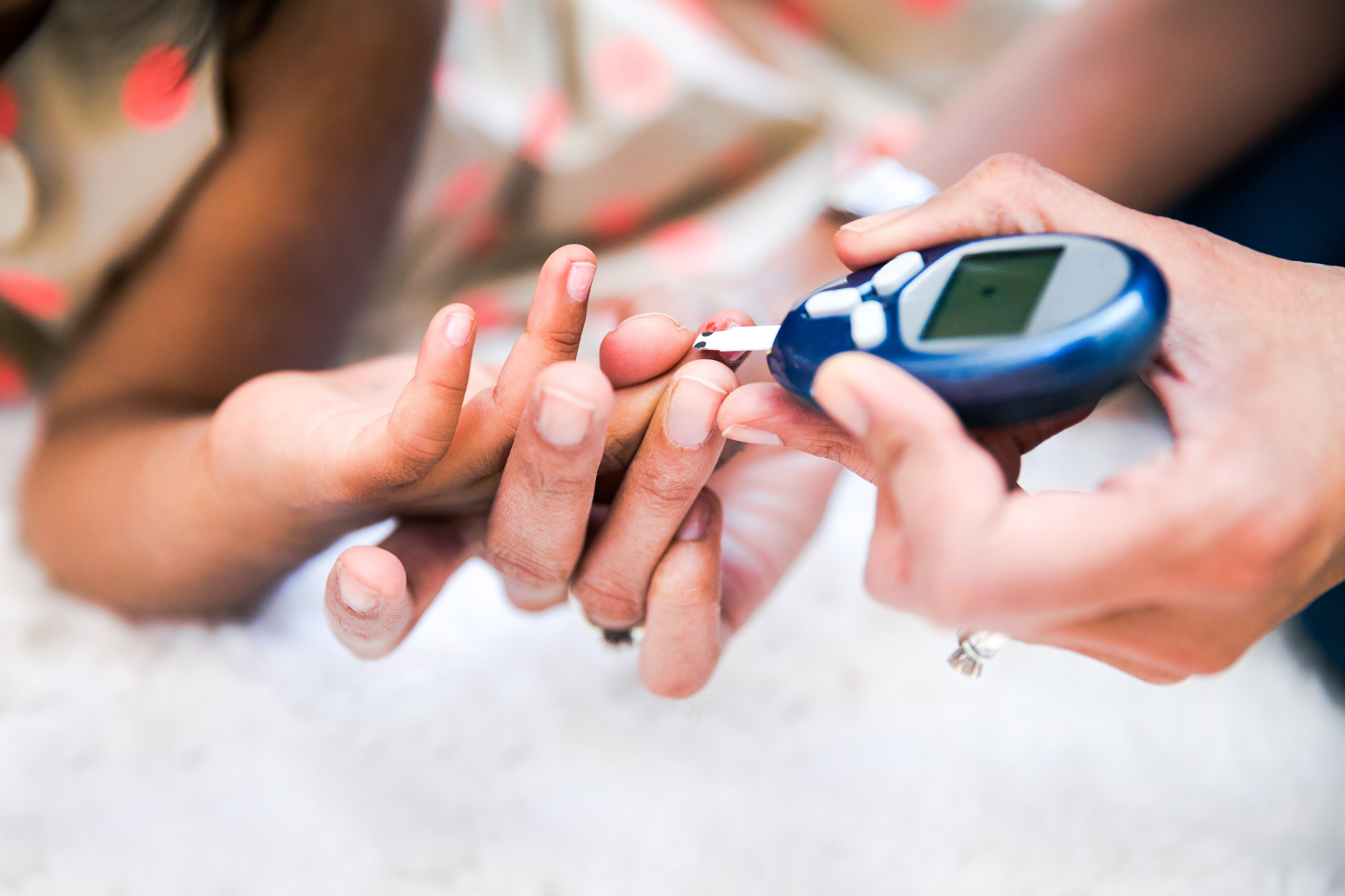Insulin pump users, just like those who receive insulin by injection, will have to take extra care during periods of illness to ensure neither
"low blood sugar" episodes (hypoglycemia) nor
diabetic ketoacidosis (DKA) develops. If your child uses a pump to deliver insulin, first make sure the
pump is working. The illness could be caused by the pump not working properly.
Once you are certain that your pump is working properly, check your child’s blood glucose (sugar) and urine ketone levels at least every four hours around the clock.
To figure out how much more or less bolus of rapid-acting insulin to give, add up the TDD of insulin and follow the chart below. You can find the TDD information in the pump's memory.
Calculating the total daily dose
The TDD is the basal dose plus the bolus dose. To know how much total insulin your child received through the basal dose and bolus doses, check the memory of your child’s pump and look at the amounts of the past few days before the illness started.
If food is being eaten at this time, the correction dose (10%–20% of the TDD) will have to be added to the amount of bolus insulin suggested by the pump to account for the carbohydrates consumed. During illness, the usual correction dose (the dose suggested by the pump) of rapid-acting insulin may not be enough and additional boluses equal to 10% to 20% of the TDD may be necessary.
Important: In this situation, you should not use the bolus dose that the insulin pump suggests but rather calculate and give the bolus based on the TDD.
For an illness during which there are consistently high blood sugar levels, the basal rate may also need to be temporarily increased. Start with an increase of 20%; depending on the results, you may need to make further increases. Please consult your diabetes team.
Always treat vomiting along with high blood sugar levels and urinary ketones as a pump failure until proven otherwise. Discontinue the pump immediately, ensure to rule out mechanical problems and perform a full infusion set change. In the meantime, use a pen or syringe to inject rapid-acting insulin equal to the amount of 10% to 20% of the total daily dose (basal plus bolus insulin).
Remember that children using pumps may get high blood sugar levels and DKA more quickly than those receiving injections because they do not have any long-acting insulin in their body.
If your child is on an insulin pump and vomits more than twice within a four-hour period, contact your diabetes team immediately for advice, as you may need to go to the closest emergency room. Check the blood sugar and ketone levels at least every four hours and consult this chart to take recommended action.
| Action to take with the insulin pump | |
|---|---|
| Blood sugar level: <3.9 mmol l> Blood ketone level: Any amount Urinary ketone level: Negative or positive (any amount) | Decrease pre-meal bolus dose and/or program a lower temporary basal rate by 20%–50% to maintain blood sugar levels in the 6–10 mmol/L range. If vomiting, contact your diabetes nurse or the on-call doctor, and consider mini-dose glucagon. |
| Blood sugar level: 4.0–14 mmol/L Blood ketone level: 0–1.5 mmol/L Urinary ketone level: Negative or positive (any amount) | Take usual insulin dose (same as for non-sick day). |
| Blood sugar level: >14 mmol/L Blood ketone level: 0–1.5 mmol/L Urinary ketone level: Negative to small (if your ketone strips follow the plus [+] scale, then negative or 1+ fall under this category) | Take 10% of TDD now, in addition to dose needed for carbohydrate intake. |
| Blood sugar level: >14 mmol/L Blood ketone level: 1.5–3.0 mmol/L Urinary ketone level: Moderate to large (if your ketone strips follow the plus [+] scale, then 2+ or 3+ fall under this category) | Take 20% of TDD now, in addition to the dose needed for carbohydrate. |
